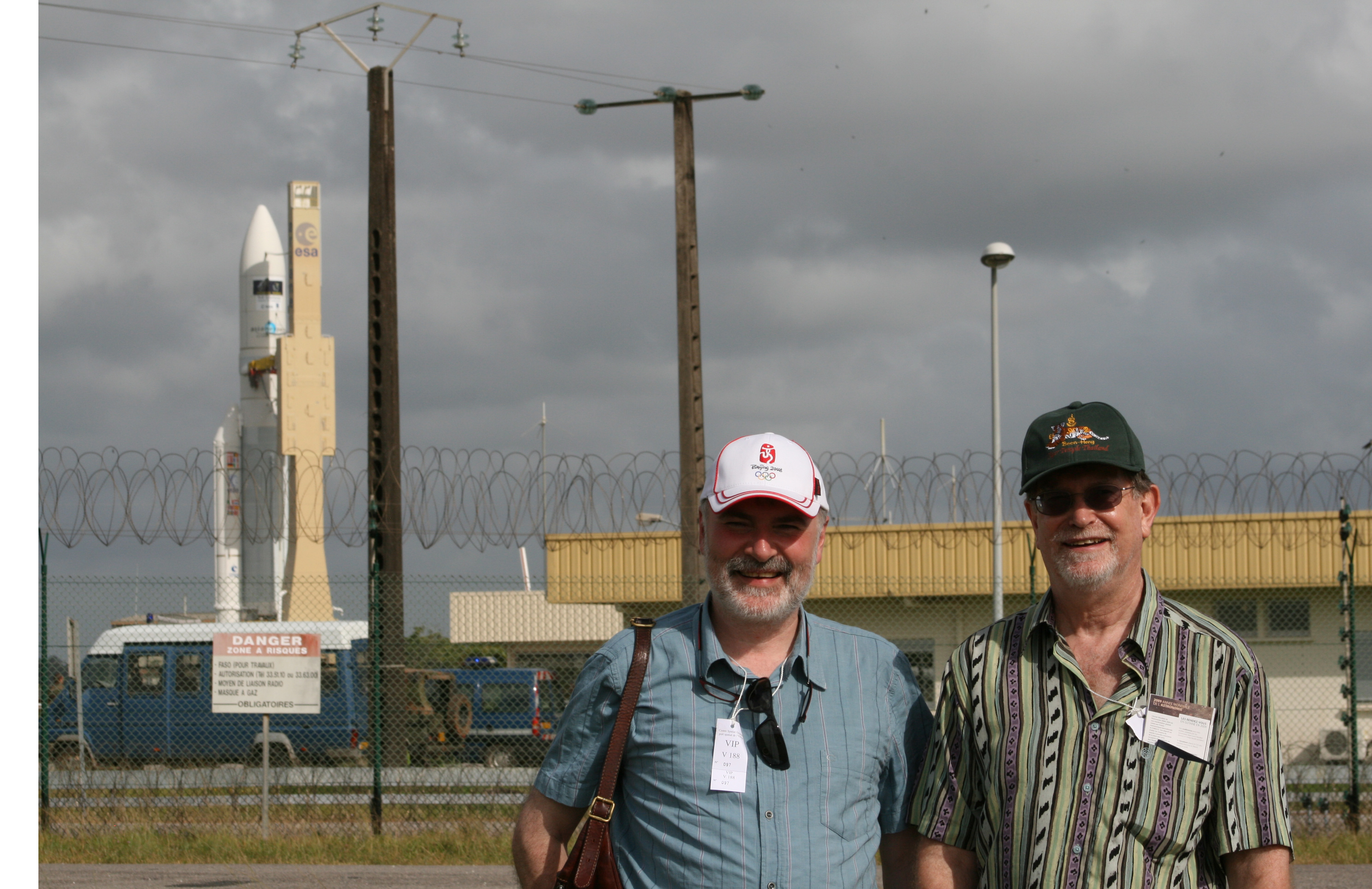Contact: Paul Preuss
Even before the results of his differential microwave radiometer experiment aboard NASA’s Cosmic Microwave Background Explorer (COBE) had been announced, George Smoot of Berkeley Lab’s Physics Division was eager to launch a space mission that could definitively explore the cosmic microwave background (CMB).
Smoot’s COBE instrument had mapped the minute temperature differences, or anisotropies, in the CMB for the first time, which eventually led to his being awarded the Nobel Prize in Physics in 2006. But in 1992 Smoot had already joined with researchers Reno Mandolesi and Marco Bersanelli, who were then visiting Berkeley Lab and the Berkeley Astrophysics Group from Italy, to propose a mission to the European Space Agency (ESA), which the three called the Cosmic Background Radiation Anisotropy Satellite, or COBRAS.
Meanwhile a proposal with similar aims but different instrumentation called SAMBA, the Satellite for Measurement of Background Anisotropies, had also been submitted to ESA. ESA combined the two approaches into one mission, COBRAS/SAMBA, which began a long march through tests and evaluations to approval late in 1996. Shortly thereafter it was renamed, simply, Planck.
Today Mandolesi, with the Institute for Astrophysics and Cosmic Physics in Bologna, and Bersanelli, with the University of Milan, are respectively the principal investigator and deputy principal investigator of one of Planck’s two experiments, the Low Frequency Instrument (LFI), an array of 22 tuned radio receivers whose design is a direct descendant of COBRAS. (SAMBA evolved into Planck’s High Frequency Instrument.)
Theorist Martin White of the Physics Division is also a Planck scientist, and Smoot remains a member of the Planck team; he recently traveled to French Guiana to observe the satellite’s successful launch aboard an Ariane 5 rocket from the ESA base there.
Planck represents a major advance over prior CMB missions, with sensitive detectors that will record the CMB’s temperature variations across the entire sky at very high resolution. These now-faint signals are remnants of density differences in the opaque, liquid-like blob of particles and energy that constituted the early universe and were imprinted on the CMB at the moment of the universe’s transition to the cooler and more transparent state that reigns today; in their variation lies the source of the large-scale structure of the present universe. Planck’s instruments also hope to detect the CMB’s faint B-mode polarization, thought to be a signal of dense gravity waves from the era of cosmic inflation.
In the process of surveying the sky, Planck will open a floodgate of data. Every CMB experiment since COBE has vastly increased the challenge of data handling and analysis, a problem physicist Julian Borrill of the Computational Research Division (CRD) has been grappling with since writing the MADCAP computer algorithm to cope with data from the BOOMERANG and MAXIMA balloon flights of 1998. Planck sets the bar at its highest yet; more than 70 individual detectors observing in 9 frequency bands will produce the hundreds of millions of pixels that will constitute Planck’s map of the sky, a challenge not only to raw computation power but also to data storage, transport, and access as well.
Julian Borrill describes the Planck mission to map the CMB and the preparations on Earth to analyze the vast amount of data it will produce.
Borrill is coleader with Peter Nugent of the Computational Cosmology Center (C³), a collaboration between CRD and the Physics Division. NERSC, the DOE’s National Energy Research Scientific Computing Center based at Berkeley Lab, is already recognized as the world’s leader in providing high-performance computing support for CMB data analysis and will be home to the U.S. Planck team’s data analysis operations. In addition to Borrill, the Berkeley Lab Planck analysis team includes C³ members Carlo Baccigalupi, Reese Baird, Christopher Cantalupo, Ted Kisner, Francesca Perrotti, Sara Ricciardi, Federico Stivoli, and Radek Stompor. DOE and NASA have entered an unprecedented interagency agreement guaranteeing a minimum yearly allocation of NERSC resources to Planck through the lifetime of the mission.
Beginning with proposals to ESA 16 years ago, Planck has matured into a bold scientific enterprise that will help provide answers to some of the most important questions in science. How did the universe begin? How did it evolve to the state we observe today? How will it continue to evolve in the future? Berkeley Lab researchers have contributed to Planck and its mission from the start and look forward to years of further cooperation and progress.
Additional information
For more on the history of the Lab’s involvement with Planck, visit the Berkeley Center for Cosmological Physics website devoted to Planck, at http://bccp.lbl.gov/planck.html.
For more on the challenges of analyzing the Planck data, go to http://newscenter.lbl.gov/feature-stories/2008/12/10/cosmic-data/.
More about Planck is at http://www.esa.int/SPECIALS/Planck/index.html.
